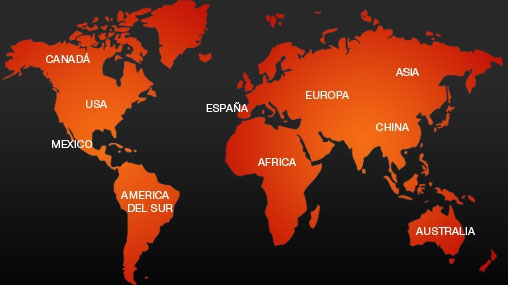- Inicio Acerca de RM Minerales
- Galería de fotos Blog RM Contacto
- Microscopia e instrumentos Pedidos Aviso legal
Copyright 2010-2025
www.rosellminerals.com



Los especímenes de galena con schalenblende proceden de esta poco conocida mina de plomo y zinc, descubierta en 1984 y actualmente cerrada. Agrupaciones de cubos de galena, con los vértices truncados por pequeñas caras del octaedro y con crecimientos polisintéticos en las caras, se agrupan estéticamente sobre la matriz mamilar de schalenblende. La schalenblende es una variedad compacta de esfalerita de grano fino, de color marrón medio a amarillo o crema, que se presenta en capas concéntricas con superficies reniformes que también pueden contener wurtzita, marcasita, pirita y galena intercaladas. Muchas de ellas fueron vendidas por Rob Sielecki, un destacado comerciante australiano.
Los cristales de dravita de Yinnietharra son un clásico de la mineralogía mundial. Hoy en día no son frecuentes y sólo se pueden obtener de colecciones antiguas que tuvieron la suerte de formarse cuando se trabajaban las minas. Este ejemplar nos muestra un buen grupo de cristales biterminados de dravita, con caras y aristas muy definidas, brillantes y con el característico color de miel tostada. Se acompañan de moscovita. Una pieza EXCEPCIONAL!!!
Una rareza muy interesante que presenta tsumebita Pb₂Cu(PO₄)(SO₄)(OH) azul verdosa asociada con tsumcorita PbZn₂(AsO₄)₂·2H₂O amarilla y corkita PbFe₃(PO₄)(SO₄)(OH)₆ amarillo verdosa de la famosa localidad de Broken Hill, Nueva Gales del Sur, Australia. Esta pieza procede de la colección de Emili Nicolau (Barcelona) y fue comprada a David Shannon.
Ejemplar de plata de esta localidad australiana formado por numerosos grupos de plata en alalmbres retorcidos. Se acompaña de siderita y galena, y probablemente de clorargirita. De la colección Vilaseca, Barcelona.
Este espécimen de la mina Broken Hill tiene un recubrimiento increíblemente rico de minio, un óxido de plomo. Ambos lados están recubiertos con este óxido de plomo con intenso color naranja rojizo. El minio es pseudomórfico de cristales de cerusita. Un ejemplar muy representativo para la especie y de esta clásica localidad. Con la etiqueta manuscrita de Ausrox.
Agregados fibrosos de malaquite, muy característicos de esta mina. Se acompañanm de pequeños cristales amarillos de wulfenita. Se disponen sobre una matriz de goethita. Una rareza en el mercado. Con una rara etiqueta antigua de Olivier Szentessy (Ginebra, Suiza).
Estético ejemplar de ópalo con notables iridiscencias azuladas en una matriz de gres de grano muy fino. De la zona de Quilpie, una localidad ganadera y minera que contiene uno de los depósitos más grandes de ópalo del mundo. Una gema...
Ejemplar formado por varios cristales interpenetrados de davidita-(La). Podemos observar diversas facetas curvadas, con brillo, de esta rara especie, del grupo de la crichtonita, y de compleja fórmula con una combinación única de elementos: La(Y,U)Fe2(Ti,Fe,Cr,V)18(O,OH,F)38.
Procede de la localidad tipo para la especie: Radium Hill. Para confirmar la especie hemos realizado un análisis SEM-EDS con resultados coherentes con lo esperado. No es fácil encontrar ejemplares de la localidad tipo y menos con facetas.
Ejemplar formado por varios cristales interpenetrados de davidita-(La). Podemos observar diversas facetas curvadas, con brillo, de esta rara especie, del grupo de la crichtonita, y de compleja fórmula con una combinación única de elementos: La(Y,U)Fe2(Ti,Fe,Cr,V)18(O,OH,F)38.
Procede de la localidad tipo para la especie: Radium Hill. Para confirmar la especie hemos realizado un análisis SEM-EDS con resultados coherentes con lo esperado. No es fácil encontrar ejemplares de la localidad tipo y menos con facetas.
La petalita es uno de esos minerales que hoy día están en el punto de mira de las grandes compañías mineras ya que se trata de un silicato de aluminio y litio, elemento este último imprescindible para la fabricación de baterías. Un ejemplar con facetas de exfoliación, de muy buen tamaño y con brillo.
Muy brillante ópalo de esta localidad australiana, con colores anaranjados, los perfiles de las dendritas de pirolusita que le dan un toque estético. Esta localidad está formada por rocas basálticas que afloran en una superfície de más de 1000 km², la mayor parte de ellas al norte y al sur de la cordillera de Dawes. El período principal de actividad volcánica fue hace unos 25 Ma. Adquirido por Joan Astor al conocido Jaume Serrate (Terrassa), al cual podríamos describir como un "artesano" de los minerales.
Grupo de cristales de yeso maclados en forma de "reloj de arena" y "cola de pez". Ejemplar con muy buena transparencia, incoloro y biterminado. Procede del famoso lago Gilles en el sur de Australia. El cristal es flotante y su transparencia nos permite ver las inclusiones de partículas de arcilla en forma de flecha. Lake Gilles produce algunas de las formas de cristales de yeso más inusuales del mundo.
La scholzita es un raro fosfato de calcio y zinc, con localidad tipo en Alemania, aunque los ejemplares más ricos y estéticos se han encontrado en esta mina australiana. El ejemplar nos muestra, por ambos lados, numerosos agregados de cristales prismáticos, casi aciculares, transparentes y brillantes. Se acompaña de agregados globulares de calcofanita (analizados por SEM-EDS).
La scholzita es un raro fosfato de calcio y zinc, con localidad tipo en Alemania, aunque los ejemplares más ricos y estéticos se han encontrado en esta mina australiana. El ejemplar nos muestra, por ambos lados, numerosos agregados de cristales prismáticos, casi aciculares, transparentes y brillantes. Se acompaña de agregados globulares de calcofanita (analizados por SEM-EDS).
En este ejemplar podemos ver la cookeita en tonos rosados. Se asocia con eucriptita, un raro aluminosilicato de litio, y cuarzo. Los pseudomorfos de eucriptita-cuarzo se descubrieron por primera vez en esta mina australiana en 1963, son de color rosa pálido y, más raramente, de color marrón vidrioso oscuro, y presentan una fluorescencia de un color rojizo bajo la luz ultravioleta de onda corta. En la zona indicada con la flecha se halla la eucriptita.
Cristales de facolita, vítreos y brillantes, incoloros, recubren la matriz de roca volcánica. La facolita es una variedad de chabasita de forma lenticular pseudohexagonal, debido al agrupación en macla de romboedros. Una miniatura de la colección Trigo, de Mataró, con su etiqueta manuscrita.
Grupo de cristales de bustamita, de buen tamaño e intenso color marrón anaranjado, con caras visibles. Se hallan incluídos en una matriz con calcita y galena. Presentan el brillo natural, con exfoliación, ya que esta pieza no ha sido acidificada. La calcita presenta una fuerte emisión anaranjada bajo la luz UV. No es muy habitual encontrar piezas de esta especie y yacimiento. Procede de la colección Joan Astor (Barcelona), con etiqueta manuscrita y otra mecanografiada.
Ejemplar muy interesante de ópalo con opalescencias de colores violetas, azules, verdes que rellenan las fisuras de un xilópalo. Muy estético por su disposición en vetas, contrastando con los colores siena de la madera fósil. Esta localidad australiana es conocida por las piñas opalizadas. Ejemplares de esta localidad son difíciles de encontrar. De la colección de Joan Astor (Barcelona).
Un clásico ópalo bandeado de Australia, con colores violetas, verdes, azules. Con una buena superficie expuesta que muestra la opalescencia. Proede de la colección A. Trigo.
Agregados globulares de cristales prismáticos de natrolita, con caras terminales definidas. Intenso brillo, transparencia y estética. Procede de una localidad bien conocida por sus zeolitas, pero de la que hoy día no se pueden obtener ejemplares ya que se halla cerrada en un parque eólico en Tasmania. De la colección A. Trigo (Mataró).
Agregado globular de cristales prismáticos de natrolita, con caras terminales definidas. Se dispone de forma muy aérea sobre la matriz. Son poco habituales los ejemplares en matriz. Procede de una localidad bien conocida por sus zeolitas, pero de la que hoy día no se pueden obtener ejemplares ya que se halla cerrada en un parque eólico en Tasmania. De la colección J. Astor (Barcelona).
Los cristales de dravita de Yinnietharra son un clásico de la mineralogía mundial. Hoy día sólo se pueden obtener de antiguas colecciones que tuvieron la suerte de formarse cuando se trabajaban las minas. Este ejemplar nos muestra un grupo de cristales biterminados de dravita, con caras y aristas muy definidas, brillantes y con el característico color de miel tostada. Se acompañan de moscovita.
La minería de pequeñas dimensiones de moscovita, utilizada en la industria eléctrica, tuvo su auge en la zona de Yinnietharra entre 1922 y 1946, también se extrajeron berilo y columbita entre 1942 y 1965, y la extracción de gemas después, hasta alrededor de 1990. Existen minerales de tierras raras, de uranio y de litio que nunca han sido explotados industrialmente.
Ejemplar de buen tamaño de stichtita muy rico y estético, procede de la zona minera en la que la especie tiene su Localidad Tipo, en Tasmania. El brillo, el intenso color púrpura, el lustre céreo y las formas fibrosas poco habituales lo hacen una pieza de calidad. En una matriz de serpentinita. Una combinación altamente representativa de esta rara especie. La stichtita es un raro carbonato de cromo y magnesio hidratado del grupo de hidrotalcita.
Ejemplar de buen tamaño de stichtita muy rico y estético, procede de la zona minera en la que la especie tiene su Localidad Tipo, en Tasmania. El brillo, el intenso color púrpura, el lustre céreo y el aspecto fibroso lo hacen una pieza de calidad. En una matriz de serpentinita. Una combinación altamente representativa de esta rara especie. La stichtita es un raro carbonato de cromo y magnesio hidratado del grupo de hidrotalcita.
Los ejemplares de esta mina australiana son poco habituales hoy día. En este ejemplar tenemos un grupo de cristales de azurita pseudomorfizados por malaquita, preservando muy definidas caras y aristas. Se disponen en una matriz de goethita parcialmente recubierta de malaquita, crisocola y pequeños cristales amarillos de wulfenita.
